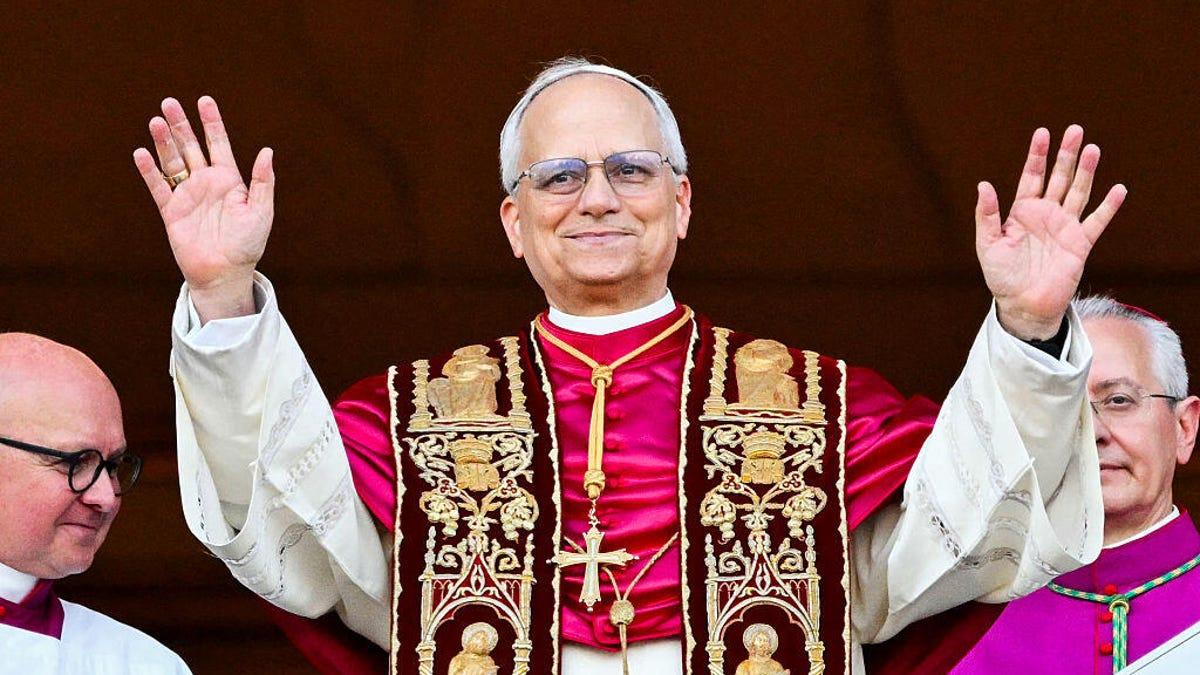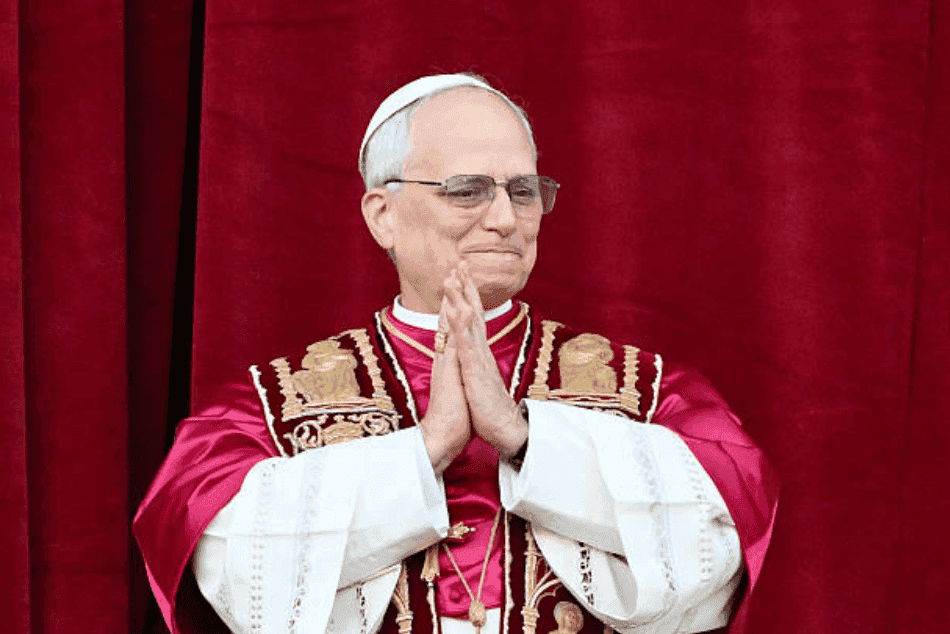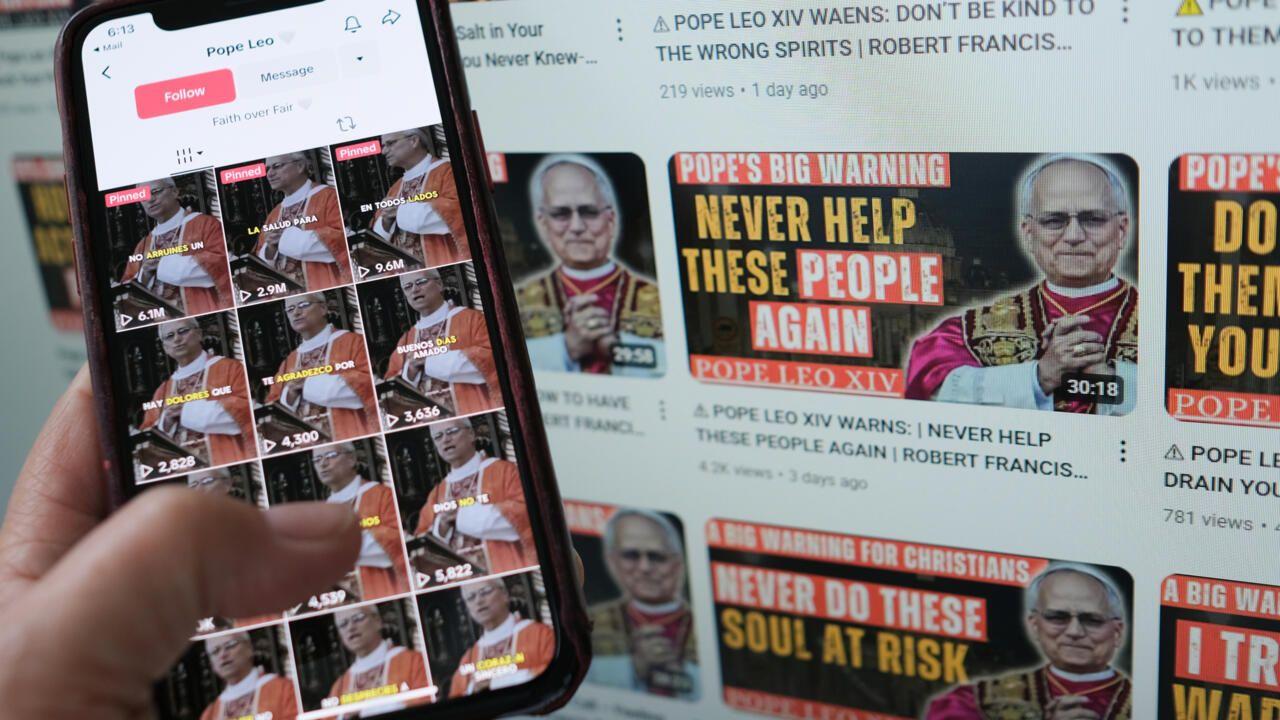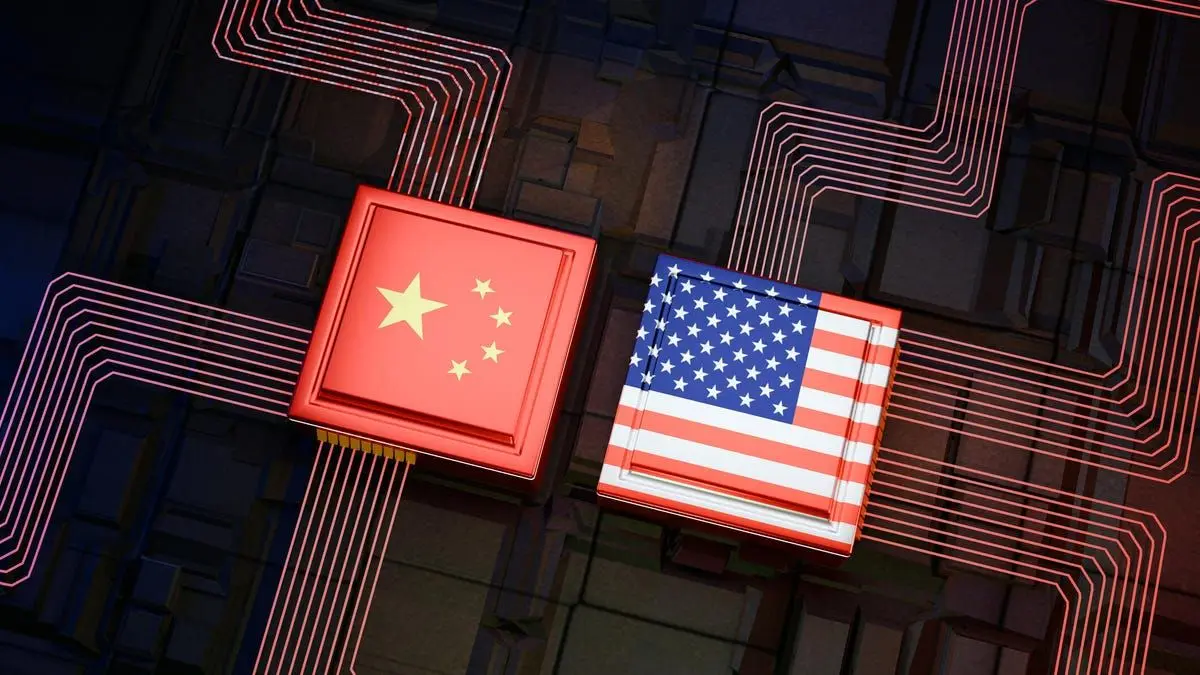Pope Francis' Final Message: A Warning on Technology and AI
3 Sources
3 Sources
[1]
Pope Francis warned against new technology replacing 'human relationships' in final weeks
Pope Francis shared a prescient warning about technology just weeks before his death. Credit: Lisa Maree Williams/Getty Images Pope Francis, the head of the Catholic church, passed away on Easter Monday at the age of 88. Pope Francis, the first Latin American pontiff, was known for his progressive ideals within a traditionally conservative institution and advocated for both social and economic justice. In the weeks before Pope Francis passed, he also shared an important and forward-thinking message about new technology. "How I would like for us to look less at screens and look each other in the eyes more!" Pope Francis said in an official video message translated from his native Spanish language. "Something's wrong if we spend more time on our cell phones than with people." The Pope's prayer concerning technology was uploaded just 3 weeks before his passing. Pope Francis's message was a part of the Pope's "Monthly Intentions" for 2025. Each month, the Pope set a "monthly prayer intention," where he invited people around the world to join him in prayer on a specific topic. April's intention, the final monthly intention before his death, was focused on new technology. The intention and related reflections posted to the Pope's Worldwide Prayer Network specifically mentioned artificial intelligence, video calls, smartphones, and screen time in general. "It's true, technology is the fruit of the intelligence God gave us but we need to use it well," Pope Francis said in his April video address. "It can't benefit only a few while excluding others." In his message, Pope Francis called on using technology to "unite, not to divide." He shared that technology should be used to help the poor, the sick, and persons with different abilities. In keeping with his environmentally-conscious messaging throughout his papacy, Pope Francis also called for using technology to "care for our common home" and to connect with one another. Ironically, many social media users underlined Pope Francis's point about technology immediately after his death, albeit unintentionally. Once the news broke, social networking platforms exploded with memes, many referencing the 2024 film Conclave about the secretive meeting of Cardinals following a pope's death. Others joked about how Vice President JD Vance was among the final people to see the Pope before his death, meeting Pope Francis on Easter Sunday. "The screen makes us forget that there are real people behind it who breathe, laugh, and cry," Pope Francis said. In the April prayer on new technology, the Pope shared his hope that "technology does not replace 'person-to-person' contact, that the virtual does not replace the real, and that social networks do not replace social settings." He concluded, "Let us pray that the use of the new technologies will not replace human relationships, will respect the dignity of the person and will help us face the crises of our times."
[2]
Francis, a pope for the internet age
Paris (AFP) - As an at-times unwitting star on social media, Pope Francis knew how to exploit the internet to preach the gospel, broadening the Church's appeal while modernising its communications. Yet the head of the world's 1.4 billion Catholics, who died on Monday, likewise regularly warned against the scourge of disinformation, and in recent years took aim at the possible perils of artificial intelligence. It was his predecessor Benedict XVI who created the papal X presence @pontifex in 2012, at a time when the now-Elon Musk owned site was known as Twitter, in a bid at reaching younger people. Within months of its creation Benedict stepped down and Francis took over, immediately striking social media gold. The handle boasts a total of 50 million followers across its accounts in nine languages, among them English, Italian, Spanish, Portuguese, French, Polish, German and Arabic. Even its account in long-dead Latin boasts one million followers. Then, in March 2016, three years to the day after he became pope, the Argentine went even further by creating an Instagram account. Today @Franciscus has nearly 10 million followers on the Meta-owned platform. As on X, the Vatican posts daily photos and videos, mostly of a religious nature, as well as excerpts from the speeches, texts and public addresses of the religious leader. His last video on Instagram, which consisted of an extract of his speech for the Easter Sunday mass, was liked by nearly 400,000 people. 'Disinformation and polarisation' That popularity however has not prevented him from criticising the negative effects of social media. While they serve "better to connect us", they can "also reinforce our self-isolation", he notably said in 2019, adding that "they also lend themselves to the manipulation of personal data". When Musk's X was accused of spreading false information and manipulating political debate and Europe in January 2024, Francis condemned "disinformation and polarisation, where a few centres of power control an unprecedented mass of data and information". Just a few days earlier, he had already condemned an era of "fake news" and warned against the abuse of AI to "manipulate people's minds". Francis himself has been the subject of AI-generated images that have gone viral on the web, showing the pontiff partying in a nightclub or getting married. In March 2023, images of Pope Francis dressed in a white puffer jacket from luxury label Balenciaga and a bling crucifix in the fashion of American rappers became an internet sensation within a few hours. That is not to say that the Catholic Church has eschewed evangelising via AI entirely. Today, worshippers wishing to learn more about Catholic faith, dogma and theology can do so on platforms such as CateGPT -- a play on the name of AI market leader ChatGPT -- and HelloBible.
[3]
Pope Francis' hopes and fears for technology and AI
The Pontiff's last prayer, shared online earlier this month, urged that new technologies would not replace human relationships. Pope Francis, who died aged 88 on Monday, was seen as a progressive who spoke openly about technology, and more recently artificial intelligence (AI), something he even became a victim of. In 2023, the Pontiff was spotted walking down St Peter's Square at the Vatican wearing a stylish Moncler white puffer jacket and a long necklace with a bejewelled crucifix. Except, it was an AI-generated image that looked very realistic and had viewers convinced it was his new style. Since his passing, a flurry of memes has ensued online about the appointment of his replacement. While the Pope welcomed social media to share his message, he also urged that technology "unite, not to divide". In one of the Pontiff's prayers in April, his last before his passing, his message was focused on technology and urged using it for good. He said he would love for humans "to look less at screens and look each other in the eyes more". He also said in the video, which was shared online on the Pope's official YouTube channel, "something's wrong if we spend more time on our cell phones than with people". "Let us pray that the use of the new technologies will not replace human relationships, will respect the dignity of the person, and will help us face the crises of our times," he added. Pope Francis had issued several warnings about the risks of AI, and the Vatican in January released an official doctrine of ethical guidelines for AI that expands on what he had previously said. Called "Antiqua et Nova," the underlying message of the "Note on the relationship between artificial intelligence and human intelligence" is that AI must be used as a tool to complement, and not replace, human intelligence. Quoting Pope Francis, the document reads: "the very use of the word 'intelligence' in connection to AI 'can prove misleading'... in light of this, AI should not be seen as an artificial form of human intelligence, but as a product of it". The document also said that autonomous and lethal weapons capable of "identifying and striking targets without direct human intervention are a "cause for grave ethical concern". Pope Francis had called for this AI use to be banned as it poses "an 'existential risk' by having the potential to act in ways that could threaten the survival of entire regions or even of humanity itself". The document was shared in mid-January, which followed the launch of Chinese AI company DeepSeek, releasing a model that caught up with American AI leaders at a fraction of the cost. As for fake news or AI-generated deepfakes, the document warned that creating or spreading such falsehoods can cause much harm. People should "avoid the sharing of words and images that are degrading of human beings, that promote hatred and intolerance, that debase the goodness and intimacy of human sexuality or that exploit the weak and vulnerable," the document reads. But the Vatican document was not all doom and gloom, and did see the promise of AI in fields such as education and health. According to the doctrine, AI has "immense potential" in many applications in the medical field, but said that AI should not replace the doctor-patient relationship as it would risk "worsening the loneliness that often accompanies illness". If not used for the right reasons, AI could also reinforce a "medicine for the rich" model if it is not accessible to everyone. The 117-paragraph document also speaks about the environmental impact of the technology, surveillance, as well as other topics. Faith and AI are also spoken about in the document, which warns: "As society drifts away from connection with the transcendent, some are tempted to turn to AI in search of meaning and fulfilment - longings that can only be truly satisfied in communion with God". "The presumption of substituting God for an artefact of human making is idolatry, a practice Scripture explicitly warns against," the document continued.
Share
Share
Copy Link
In his last days, Pope Francis cautioned against the overuse of technology and AI, emphasizing the importance of human relationships and ethical AI development.

Pope Francis' Final Warning on Technology and AI
In the weeks leading up to his passing at the age of 88, Pope Francis, the head of the Catholic Church, shared a prescient message about the role of technology in modern society. His final monthly prayer intention, released just three weeks before his death, focused on the ethical use of new technologies, particularly artificial intelligence (AI)
1
.A Call for Human Connection
Pope Francis expressed concern about the increasing prevalence of screen time in our daily lives. "How I would like for us to look less at screens and look each other in the eyes more!" he said in his official video message
1
. The pontiff emphasized the importance of maintaining human relationships in an increasingly digital world, warning that "something's wrong if we spend more time on our cell phones than with people."Balancing Technology and Human Dignity
While acknowledging technology as "the fruit of the intelligence God gave us," Pope Francis called for its responsible use. He urged that technology should "unite, not divide" and benefit everyone, not just a select few
1
. The Pope's message aligned with the Vatican's recently released doctrine on AI ethics, "Antiqua et Nova," which emphasizes that AI should complement, not replace, human intelligence3
.Related Stories
The Vatican's Stance on AI and Technology
The Vatican's doctrine addresses various aspects of AI and technology:
-
Autonomous weapons: The document expresses "grave ethical concern" over weapons capable of identifying and striking targets without direct human intervention
3
. -
Deepfakes and misinformation: It warns against creating or spreading AI-generated falsehoods that can cause harm
3
. -
Healthcare applications: While recognizing AI's potential in medicine, the doctrine cautions against replacing doctor-patient relationships with AI
3
. -
Environmental impact: The document addresses concerns about the ecological footprint of AI technologies
3
.
Pope Francis: A Pontiff for the Digital Age
Despite his warnings, Pope Francis embraced social media as a tool for evangelization. The papal X (formerly Twitter) account @pontifex boasts 50 million followers across nine languages, while his Instagram account @Franciscus has nearly 10 million followers
2
. This digital presence allowed the Pope to reach a broader, younger audience with his message.However, Pope Francis was not immune to the challenges of the digital age. In 2023, AI-generated images of the pontiff wearing a stylish white puffer jacket went viral, highlighting the potential for AI to create convincing fake content
3
.As the world mourns the loss of Pope Francis, his final message serves as a reminder of the need to balance technological progress with human values and ethical considerations in the rapidly evolving landscape of AI and digital technologies.
References
Summarized by
Navi
[1]
[2]
Related Stories
Pope Leo XIV Rejects AI Avatar, Warns of Technology's Impact on Humanity
19 Sept 2025•Technology

Pope Leo XIV Takes Stand on AI: Calls for Ethical Framework and Regulation
19 Jun 2025•Policy and Regulation

Pope Francis Warns Davos Summit of AI's Potential to Exacerbate 'Crisis of Truth'
23 Jan 2025•Policy and Regulation

Recent Highlights
1
Google launches Gemini 3 Flash as default AI model, delivering speed with Pro-grade reasoning
Technology

2
OpenAI launches GPT Image 1.5 as AI image generator war with Google intensifies
Technology

3
OpenAI launches ChatGPT app store, opening doors for third-party developers to build AI-powered apps
Technology





